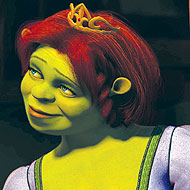Well my dear friends knights, I'm back after a week hard work:
monday: music theory and orchestration lessons, then at evening my choir
tuesday : going to play chess for my club somewhere in the country. did not play, car stopped halfway, was lucky to get home with leaking dynamo? or something? ?
wednesday: music theory lessons, then going to play chess for my club somewhere in the country. lost from somebody with a rating 350 more then mine.
thursday: my other choir
friday: chess at the club. victory, hurray (blessed is king's gambit, again)
saturday: extended housework, shopping and visitors
Every day : working on my circles : 480 for the 5 time, 300 for the 4 time, all 100 %, yahoo ! and 200 for the first time 90 %. Oke the problems are not to difficult but if I could see them in real games allways I would be a much better player.
But now the thing is how to get the situations on the board?
With somebody who plays weaker than I do, I have the chance and tempo's to create attacs according my tactical lessons.
With stronger players not. It seems like I only can follow his moves and defend.
My openings are for this reason quite agressive so my opponent have to follow my rules. But....
This guy who I met last week with 300 points more rating turned the situation after 5 moves.
From attacker I become defender. I hate this. I want to keep control, so I have the time and tempo's to set up a sneaky trap.
The question is now:
What is a good opening in relation with tactics?
By exemple, the games where my bishops are both pointing from the queenside on to my opponents kingside are usually won by me. In the famous books from Mr Max Euwe is keeping the bishop pair highly recommendend. He gives allso a lot advices about openings.
I understand his ideas a little but it seems to me that his ideas are for the long range. In the books of Gallagher I found more openings (especially the Kings' Gambit) which create the situations where I can find all these tactical possibilities. Mr Euwe did not like kings gambit at all.
He recommanded for black Kings Indian. I quotate:"with good chances for black". I tried to played this with result: my opponent shuffled all the pawns in the center until we both did not have a move at all, untill we have to sacrifice to break in the centre. Then it was only exchanging peaces and an endgame with some pawns. For my tricks I learned from my tactical course I need open lines. Oke I know there must be more in the game but I cannot see it. For me is: the more chaos the more I like it. In the complications are the double attacks. My queen can skate around when she has the space. I need my knights to jump around on unexpected locations.
With closed games it is to difficult (yet) to see. As long I am not a grandmaster I have to mess around in open, complicated (?) games, where everything could happen.
Subscribe to:
Post Comments (Atom)

3 comments:
If I remember correctly, I think Euwe was more of a positional player than a tactical one. Tactical players would be like Morphy, Marshall, Alekhine, Tal, Kasparov, Anand, etc.
Continuing on CD's idea, I would pick one of those players and study a bunch of their games. You could probably pick up some nice, but really difficult, ideas on tactical play.
PS
For tactical openings as white, I would recommend the King's gambit or the Danish gambit (1.e4 e5 2.d4 exd4 3.c3 dxc3 4.Bc4 cxb2 5.Bxb2). These are pretty difficult to avoid with normal moves, though some black players will bail out on the Danish with 3...d5. These are what my sparring partner plays and he gets nice attacks out of them.
As black, try the 2...Nf6 variation of the Scandinavian (1.e4 d5 2.exd5 Nf6). Emms just released an updated version of his book on the Scandinavian which looks pretty good though I've not played the Scandinavian in a while. I don't know what to tell you to play against 1.d4 since I rarely face it and when I do I play the queen's gambit declined to this anyway.
Schilling has a couple of books "Gambit Opening Repertoire for White" and "Gambit Opening Repertoire for Black" that would help with both of these recommendations.
Good luck!
Regards,
Chris
Post a Comment